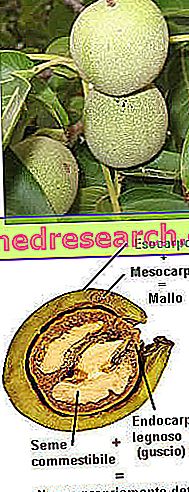What is Cat's Ringworm
The ringworm of the cat (or feline dermatophytosis ) is a rather common infectious disease, supported by pathogenic fungi that live on the animal's hair and skin.

In particularly immunocompromised cats, dermatophytosis can be multifocal and even generalized. Image from the site: www.abcdcatsvets.org
The symptomatology is very variable: usually, the lesions resulting from the infestation are circular areas without hair, associated with the presence of dandruff and crusts.
Early diagnosis is very important, as the possibility of contagion of people and other animals in contact with the infected cat is high.
The treatment involves the administration of antifungal drugs for local and systemic use, for at least 4-6 weeks, and environmental decontamination.
What are dermatophytosis (in short)
Dermatophytosis is an infection sustained by some keratinophilic fungi (ie able to parasitize keratinized tissues) and keratolytics, called dermatophytes .
These diseases affect the hair, the horny layer of the epidermis and the nails of men and animals, including cats, dogs, rabbits and other rodents.
Dermatophytosis occurs with variable clinical features, but commonly involves a non-itchy alopecia and different degrees of skin inflammation .
Causes
Ringworm is a worldwide spread of fungal infestation. This disease can easily be transmitted to humans and animals in contact with the cat that has dermatophyte infection.
Ringworm is, in fact, very contagious: the hair and fungal spores that fall from the animal cause the infestation of the environment. Therefore, it is not essential for a direct contact to occur for the spread of the etiological agent: a cat can infest itself by lying down on a mat used by an infected animal a few days before.
Pathogens
- In over 90% of cases, cat ringworm is caused by Microsporum canis . In fact, this causal agent recognizes its natural reservoir in the domestic feline (although the term "canis" can be misleading).
- Rarely, the infestation can be sustained by other dermatophytes belonging to the genera Microsporum (such as M. gypseum ), Trichophyton (including T. mentagrophytes and T. terrestre ) and Epidermophytom . These pathogens are occasionally found in cats, with the possibility of going outside and coming into contact with rodents, cattle and horses.
Transmission mode
The infection occurs by direct contact with an asymptomatic carrier cat or with active dermatophytosis .
Ringworm transmission can also occur through material contaminated by an infected animal, such as blankets, kennels, grooming tools and carriers.
The fungus spores are very resistant and can cause infection for several months after their production. Often, the cat can act as a simple mechanical vector of these elements: this means that it does not present an active infection and does not present visible skin lesions, but contributes to spreading the disease.
Humans become infected through direct contact with the carrier cat or through spores scattered in the environment: the most affected areas are the face and arms, but sometimes the infection spreads to other body regions as well.
Incubation period
The ringworm incubation period is from one to three weeks.
Risk factors
Feline dermatophytosis is found mainly in young cats, especially if immunologically debilitated, which live in close contact with each other and in poor hygienic conditions.
Ringworm is mostly reported in cats with immunosuppressive diseases (eg IVF), in large populations of strays, in long-haired breeds and in animals with the possibility of going outside.
Temperature is also a risk factor to consider: ringworm is more common in hot and humid places. As for the geographical distribution, the disease is found mainly in the tropical and subtropical climate regions.
The factors that can favor the development of feline dermatophytosis include malnutrition, concomitant infections, presence of skin parasites and excessive or too frequent grooming.
Symptoms in the cat
The ringworm of the cat has a variable clinical presentation.
The classic lesions are localized or multifocal areas of alopecia ( patchy hair loss ), with erythema and exfoliation ( dandruff ). Some cats also show itching by licking, nibbling and scratching.
At the beginning, these symptoms occur mainly on the muzzle, auricles, the back of the nose and the cat's front legs. These offices are, in fact, those most exposed to possible contact with the causal agent.
The first lesions can heal spontaneously in a few weeks, but others can appear in different locations.
In long-haired cat breeds, this fungal infestation can cause a rarefaction of the diffused hair ; therefore, some areas of the body will have a less dense coat.
In some cases, roundish areas can be seen with broken hairs . Moreover, some cats may present pustules, scales and crusts.
Other possible events include:
- Miliary dermatitis (reaction often associated with flea allergy, which involves small scabs spread on the cat's body and hair loss);
- Generalized seborrheic dermatitis (especially in Persian cats);
- Folliculitis with papules and comedones;
- Nodular lesions (pseudomycetomas and mycetomas);
- Pyoderma of facial folds;
- Conjunctivitis and blepharitis.
Sometimes, ringworm also involves the cat's nails, causing onychomycosis and paronychia.
Warning!
When a cat has patches without fur, it is not necessarily affected by ringworm. Exposure to the causative agent does not mean, in fact, that dermatophytosis is automatically established: as a rule, the immune system is able to avoid infection, which occurs mainly in debilitated animals and puppies in which the defenses are not yet well developed.
In any case, it is important to check with the vet of any cat with visible skin lesions, to avoid complications in the animal, such as the possibility of incurring other infections. Furthermore, early diagnosis allows therapy to be established immediately and the possibility of contagion towards people and other animals to be reduced.
Diagnosis
The diagnosis of cat ringworm is formulated by the veterinarian on the basis of various complementary investigations:
- Wood lamp examination : the animal's coat is observed in a dark room with an ultraviolet light; the presence of an apple-green fluorescence, typical of some M. canis strains, may suggest a positive outcome for ringworm.
- Direct microscopic examination of the hair : consists of tricoscopic observation for the detection of dermatophytes and their spores or to show alterations in the structure of the cat's coat.
- Culture test for dermatophytes : some hairs taken from the animal by tearing or brushing are placed in a specific culture medium for the growth of etiological agents; after 1-2 weeks, the development of a fungal colony will confirm the diagnostic suspicion and will allow to identify the type of dermatophyte responsible for the pathology, through microscopic analysis.
Treatment and prevention
If the outcome of the veterinary examination is positive, it is possible to immediately establish the specific therapy for the ringworm. The duration of therapy varies from weeks to months.
First of all, the infected cat must be immediately isolated from other animals (after the ringworm diagnosis, it should remain possibly in an environment that is easy to clean and decontaminate).
The treatment of feline dermatophytosis involves the use of an oral fungicide (such as itraconazole and griseofulvin), prescribed by the veterinarian, for a period of at least six weeks. The systemic approach is to be associated with local treatments (lotions, shampoos or foams based on lime sulphide, enilconazole or miconazole), to be applied approximately twice a week. This last option makes it necessary to shear the animal, as the spores adhering to the cat's hair, if not removed, could pollute the environment and infect people or animals.
After about 4 weeks, before stopping the treatment, it is essential to perform a control culture test : if this is positive, it is necessary to continue the therapy in order to completely eradicate the infection. Healing is established after 2-3 consecutive negative fungal cultures, carried out 1-2 weeks apart.
Another factor to consider is the control of the environment in which the animal affected by ringworm is treated during treatment. In particular, it is advisable to clean daily with vacuum cleaners and wash the rooms frequented by the cat with bleach diluted in water according to the ratio 1:10, leaving it in contact with the surfaces for at least 10 minutes before rinsing. This solution can also be used to accurately clean equipment and potentially contaminated objects (carriers, kennels, mats and brushes).
Non-washable surfaces can be treated with specific anti-fungal spray products; what cannot be decontaminated, on the other hand, should be eliminated. Furthermore, if the room is equipped with air conditioning, it is advisable to disinfect the air vents and change the filters present in the room.
At present, a vaccine is not available that can effectively protect against the development of a feline dermatophytosis. As for prevention, the only way to avoid cat ringworm is to prevent the animal from coming into contact with other cats that are affected.



